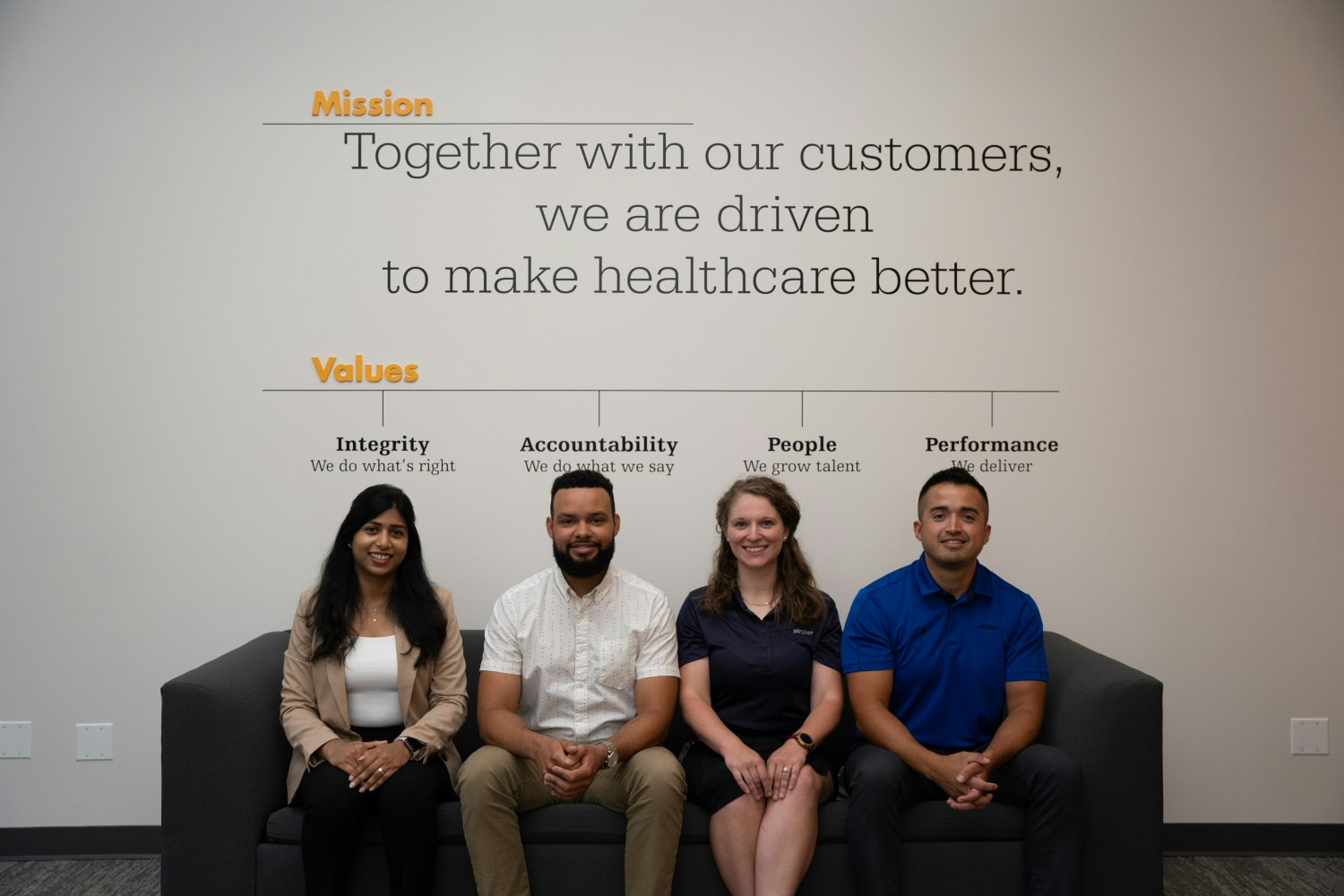High-trust leadership, Inspiring, Purpose
“Inspiring” — one of the nine high-trust leadership behaviors — is all about helping employees see how they fit into the bigger picture and how their work makes a difference.
What does it mean to be an inspiring leader?
It all comes back to purpose, says Michael C. Bush, CEO at Great Place To Work®.
“Help your workforce understand how their work relates to the company’s higher purpose and business success,” he advises.
On an individual basis, make sure employees understand the valuable role they play in achieving your organization’s goals. Does everyone have an opportunity to interact with the product, meet a customer, or witness how your company is changing the world?
Register for the next For All Summit™, April 21-23, to connect with leaders and experts from great workplaces around the world.
Meaningful work is a crucial part of the employee experience — and the No. 1 predictor of employee retention.
How tapping into purpose builds trust
Here’s how great workplaces are helping their employees connect with a mission that is bigger than themselves, and find deeper meaning in their work:
1. Use storytelling to highlight shared values
When companies live up to their values, that builds trust. Great workplaces invite employees to share their personal stories to reinforce shared beliefs and expectations.
Global biotechnology company AbbVie developed a set of five principles with input from employees around the world:
- Transforming lives
- Acting with integrity
- Driving innovation
- Embracing diversity & inclusion
- Servicing the community
To engage employees, AbbVie launched a video series where company leaders and employees shared their personal connection to each principle.
Storytelling can also help connect employees to the bigger picture, ensuring that everyone in the organization understands how they contribute to a broader goal.
At Vertex Pharmaceuticals, a Bell Ringing ceremony is held to celebrate important milestones in the disease treatment development. At these ceremonies, a patient and their family join the organization to “ring the bell” honoring the progress made in treatment of their disease area.
Employees can see first-hand the impact of their work on patients living with debilitating illnesses, and the ceremony serves to connect employees with the deeper purpose of their work.
2. Meet employees where they are
Do your efforts to inspire employees use clear, accessible language? When employees read your mission statement, is it clear how they fit into the picture?
At Wegmans Food Markets, a commitment to transparent language is part of the secret sauce, as captured in its “W board” — a mission board on display at all of its locations.
“We work very hard to ensure the W board is relatable to every employee at all levels,” says Peggy Riley, vice president of employee communications and engagement at Wegmans. “We don’t have big, fancy, complicated words, or equations. Every single employee contributes to our success.”
Consider communication barriers such as language differences or access to communications technology. If you are trying to reach a frontline, deskless workforce, make sure your mission doesn’t only live on your intranet or in a company email newsletter.
By making the W board a physical representation of its values in every location, Wegmans ensures every employee, from a senior vice president to a cashier, interacts regularly with values and the mission of the company.
3. Share the metrics that matter
The mission becomes more real when there are numbers to show your impact.
Stryker, a biotechnology manufacturer, calculates how many patients it has impacted around the world using a methodology developed by a cross-functional team of experts at the company. The team calculated that it impacted over 130 million patients annually — a figure that fills employees with pride about their accomplishments.
This number is shared each year with all employees and published annually in Stryker’s comprehensive report. The company credits these efforts as one of the major reasons they see such high scores on pride in the company’s annual Trust Index™ Survey.
Of course, the metrics that often carry the most weight are business outcomes and the bottom line. Cisco publishes a Purpose Report each year and has made a clear connection between purpose and business success.
That’s how Cisco closed deals with 24 clients that weren’t asking for help with hardware or software, but came to the company for help turning diversity, equity, and inclusion into a business amplifier and accelerator.
4. Give every employee the chance to connect with their impact
Other workplaces focus on ensuring that every employee, regardless of role or tenure, has the opportunity to have an impact.
At Jackson Healthcare, employees are asked on their first day at the company about the kinds of service that would be most rewarding for them. The company then works hard to empower employees with the tools they need to get involved, both in their jobs and in their personal time.
The vice president of community impact invites every new hire to a one-on-one coffee chat to hear their story and discover ways to get them involved, when and how they want.
Employee resource groups also offer a unique opportunity to engage and inspire employees.
At Scripps Health, an employee-led sustainability council focuses on improving operations across areas including construction, energy, food, grounds, recycling, supply chain, transportation, and vendor partnerships. Panda Restaurant Group coordinates with its Panda Green Committee ERG to run a drive that recycled 500 pounds of electronic waste in 2022.
5. Train managers to lead with purpose
When researchers analyzed data to understand if purpose leads to higher company profits, they found that clear communication was a crucial ingredient. In particular, middle managers and professional workers within an organization played an outsized role in whether companies saw the benefits of embracing purpose.
For companies looking to inspire employees, the data shows the critical role that middle management and people leaders play as communicators and connectors. Great workplaces spend resources to make sure these leaders can help their teams connect to purpose.
At DHL Supply Chain, more than 9,000 frontline leaders were given communications training as part of a two-day program to help managers develop the skills to communicate strategy business priorities. Leaders who participated reported that this was the first time they considered their role in companywide communication, and that it helped them understand how to make topics across the business accessible and relevant to their teams.
Turn culture insights into business wins
Let the Trust Index™ Survey reveal your workplace’s hidden strengths and areas for growth. Start transforming today.











